You think you’ve just finished shaving your pubic area, but you notice something. It’s red, itchy, and painful. You have a razor bump in your pubic area.
Razor bumps are common for many people who shave the sensitive skin of their genitals, so if you’re dealing with them, don’t beat yourself up about it. If you get a case of razor bumps around the pubic area, you can treat it right away and take steps to prevent future razor bumps.
Here’s how to treat razor bumps in the pubic area once they pop up (and how to prevent them in the first place).
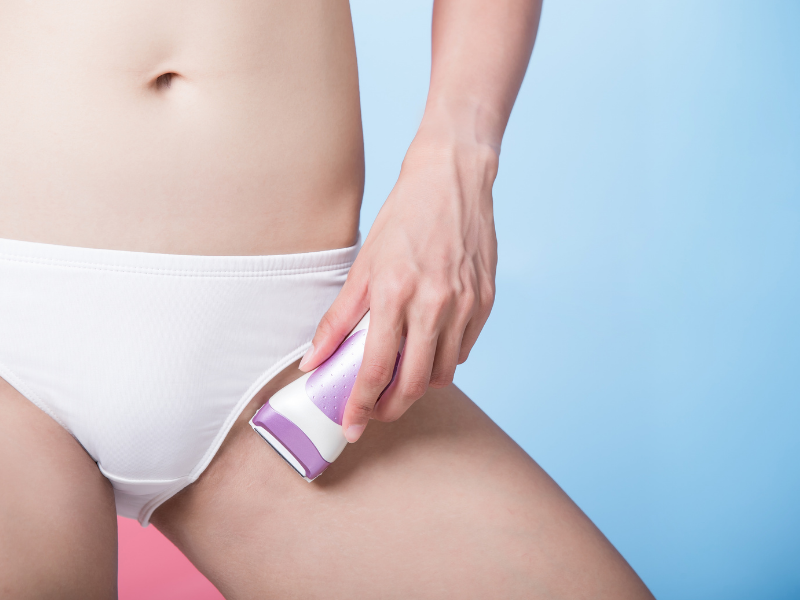
Razor bumps are small, red bumps that can appear after shaving. They’re called “razor bumps” because ingrown hairs from shaving cause them. These bumps develop when hair shafts become trapped beneath the skin’s surface. Ingrown hairs can be painful, itchy, and embarrassing, especially in a sensitive area like your pubic region!
Yes! If you’ve ever shaved or waxed the areas around your genitals, you’re at risk of getting razor bumps. The good news is that if you follow these tips for preventing razor bumps in the future, they’ll be less likely to appear on your body again.
These tips will help keep your skin in good condition and hopefully prevent problems from razor bumps.
If you already notice a red, bumpy rash on your skin, it is too late for prevention. It’s time to focus on treatment.
Make sure to wash the area gently with warm water and soap each day. That will help to cleanse your skin and prevent infection.
Apply a topical cream that soothes razor burn or ingrown hairs, such as aloe vera gel or witch hazel solution.
Apply a warm compress to the affected area for 10 minutes, up to three times per day, to increase blood flow to the area.
If your symptoms don’t go away or become worse, talk to a doctor about other treatments or prescription medications.
If you get razor bumps, treat them right away and take steps to prevent them from coming back.
Razor bumps are no fun, but they’re also nothing to be embarrassed about. Lots of people get them, and you can take steps to prevent them and treat them. Now that you know how razor bumps form and some tips for getting rid of them, give the methods we covered a try!
If you try to relieve razor bumps on your own, but they won’t go away, it’s time to talk to a medical professional.
If razor bumps have you bothered and you want to talk to an online doctor, Razor Bumps, Inc.’s board-certified physicians are available now through easy virtual video visits. Find out more by chatting with us now.
Disclaimer: The contents of this article are for informational purposes only and do not constitute medical advice. The information, graphics, and images on this site are not intended to substitute diagnosis or treatment by a medical professional. Always seek the advice of a licensed physician for any questions you may have regarding a specific condition.
Spring break is just around the corner. Soon it will be time to strip off the winter layers and bare your skin to the sun. But for some men and women, shaving the thighs or abdomen brings to mind bothersome razor bumps.
If shaving your bikini line causes skin irritation, you are not alone. Razor bumps are a common condition. The good news is you can take steps this spring to avoid bikini line razor bumps. Here’s how to get a bathing suit ready with the smooth shave you want.
Here are some steps you can take to get a silky bikini shave, without those pesky razor bumps.

First, it is important to understand why razor bumps show up along the bikini line. The hair along the bikini line is usually coarse and curly. This type of hair tends to curve as it grows. After shaving, sharpened hair tips can turn and grow right back into the skin. An ingrown hair, or multiple ingrown hairs, can result within 24-48 hours of shaving. That causes what appears as swollen, sensitive bumps on the bikini line.
Many women notice bumpy areas on their inner thighs and abdomen after shaving. If you've experienced this, here are some tips to up your shaving game to avoid bikini line razor bumps.
After shaving, consider using a topical skin treatment to soothe the skin and reduce irritation. Witch hazel and aloe vera are all-natural, over-the-counter products that are known for being anti-inflammatory and antiseptic. In other words, they calm skin and reduce bacteria. Use a cotton ball to apply these or other products to the affected skin.
“When trauma occurs to your skin, it reacts by becoming inflamed and bumpy,” explains dermatologist Dr. Mona Gohara, MD.
If you already have a case of razor bumps in your bikini area, it’s not too late. Here are some tips for dealing with skin irritation after shaving.
In some cases, razor bumps on the bikini line can become serious. If your razor bumps become worse over time, don’t go away, or are accompanied by other symptoms such as severe pain or are interfering with your daily activities, it might be time to talk to a doctor.
Now you know how to avoid or get rid of those unsightly and uncomfortable bumps from shaving. Even though the bikini line is a high-risk area for razor bumps, you can get the smooth shave you want with a little extra effort. Try these tips at home and be ready for your spring break out.
If razor bumps have you bothered and you want to talk to an online doctor, Razor Bumps, Inc.’s board-certified physicians are available now through easy virtual video visits. Find out more by chatting with us now.
Disclaimer: The contents of this article are for informational purposes only and do not constitute medical advice. The information, graphics, and images on this site are not intended to substitute diagnosis or treatment by a medical professional. Always seek the advice of a licensed physician for any questions you may have regarding a specific condition.
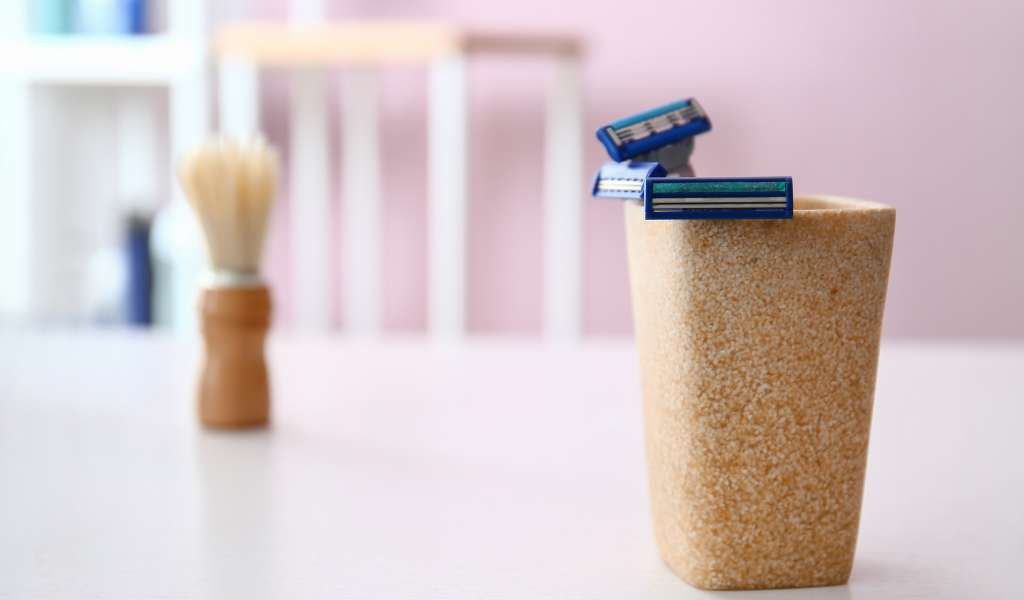
Day One after shaving, skin feels nice and smooth. So why does Day Three feel bumpy and painful? Is your razor causing the bumps? Well, that is a common question.
Shaving can cause unsightly and bothersome razor bumps. In short, the type of razor and how it is cared for certainly contributes to skin irritation. Hence, changing your razor can reduce razor bumps and improve the skin’s appearance.
To find out which razor you should be using and how to care for it, read on.
Razor bumps is a term that is used to describe the skin irritation that commonly appears 2-3 days after shaving. Men may see this condition on their faces, while women can experience razor bumps from to-avoid-bikini-line-bumps/">shaving the bikini area. Essentially anyone using a razor for hair removal is at risk for razor bumps.
There are many types of razors available today. Each type of razor is different in terms of cost, convenience, and use. Here are some pros and cons of the common types of razors for shaving.
| Type of Razor | Pros | Cons |
| Electric Razor | Faster shave Convenient for on-the-go use Wet or dry | Requires batteries or power More expensive Requires maintenance/cleaning |
| Straight Blade | Lower risk of skin irritation No pulling/tugging at the follicle Better precision | Most expensive The learning curve to use Takes more time to shave and requires products |
| Disposable cartridge, double or triple blade | Easy to use Easy to replace Less expensive Closer shave | Risk of nicks/cuts Replace after 4-5 uses Going over areas repetitively increases skin irritation |
The key to selecting a razor that won't cause bumps is to consider how the razor works.
Most electric razors snip hairs off between multiple rotating blades. Some may pull or tug the hair, which can irritate the follicle. Pulling hairs before cutting also means that blades will release the hairs below the skin's surface. While that can mean a close shave, it can also be a problem. Growing under the surface may lead to ingrown hairs.
Choosing a razor with the least number of blades will help reduce razor bumps too. Disposable razors with two or three blades usually work by catching the hair on the first blade and cutting it off with the second blade. A single-blade and straight razors allow a clean cut without tugging hair or leaving a jagged edge.
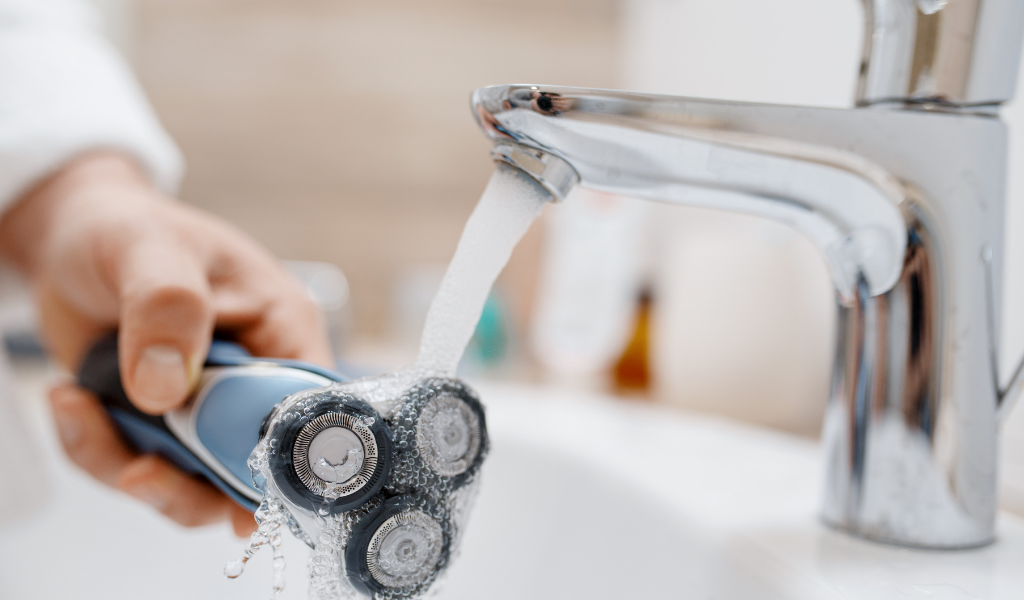
Properly caring for a razor can also help prevent razor bumps. Here are some keys to razor care that will help to prevent razor bumps:
No matter what type of razor you choose, keeping it clean and protecting the blades before, during, and after use can help reduce razor bumps.
Now you know how to choose a razor and how to care for it. These two steps can reduce the burden of razor bumps. If you’ve tried changing your razor but still battle razor bumps, it might be time to talk to a doctor. In some cases, razor bumps can be severe, or lead to more serious conditions.
To talk with one of the top board-certified physicians, book an appointment below. Our caring experts can help answer your skin questions.
Disclaimer: The contents of this article are for informational purposes only and do not constitute medical advice. The information, graphics, and images on this site are not intended to substitute diagnosis or treatment by a medical professional. Always seek the advice of a licensed physician for any questions you may have regarding a specific condition.
Tshudy, M. & Cho, S. (2021, January 30) Pseudofolliculitis barbae in the U.S. military, a review. Military Medicine, Volume 186, Issue 1-2. Retrieved from https://doi.org/10.1093/milmed/usaa243
Nussbaum D. & Friedman A. (2019, March) Pseudofolliculitis barbae: A review of current treatment options. Journal of Drugs in Dermatology : JDD, 18(3). Retrieved from https://europepmc.org/article/med/3090932
Eske, J. (2019, July 29). Causes and remedies for itchiness after shaving. Medical News Today. Retrieved from today.com/articles/325886#causes">https://www.medicalnewstoday.com/articles/325886#causes
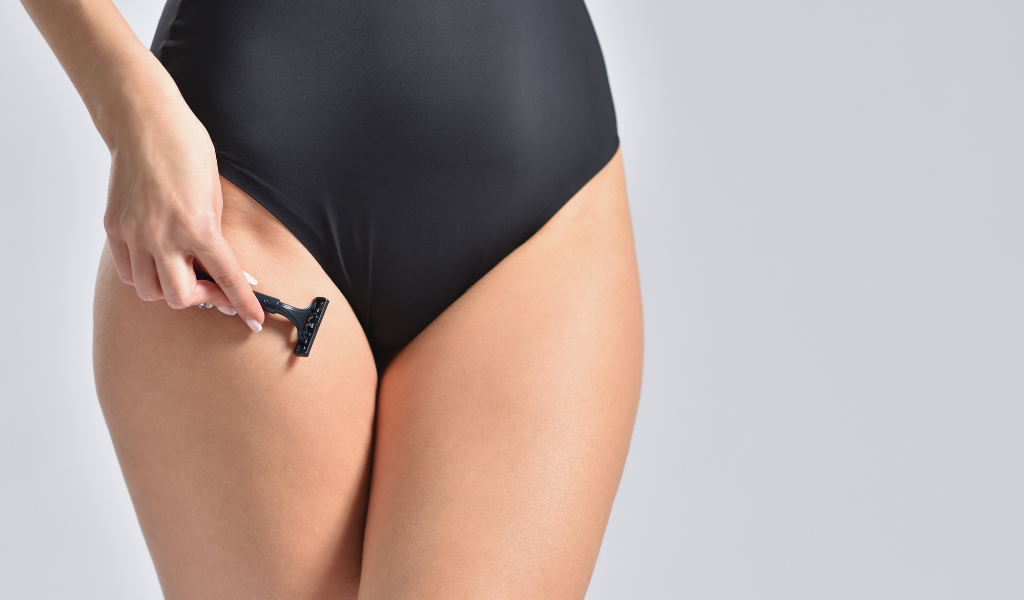
Bumps on the bikini line after shaving are common. Razor bumps happen when irritated hair follicles become swollen, itchy, or even infected after hair removal.
To avoid bikini line bumps, it is important to know what causes them. Then, taking special care to protect the skin can go a long way in preventing problems. In most cases, bikini line bumps are bothersome but harmless.
Here are some tips to stop this skin care problem and what to do when it becomes serious.
The bikini area refers to the skin and hair next to the genitals. These areas are bared when wearing a bikini. For looks and comfort, many women choose to shave or wax there.
Pubic hair removal is common. About 83% of women report grooming their bikini areas. Understanding hair growth in this area is the first step to preventing skin problems.
Although most women admit trying to eliminate some (or all) of the hair in the bikini area, it is there for a couple of reasons, such as:
Shaving around the genitals can lead to ingrown hairs, skin infections, even painful cuts or burns. Hair removal can seriously irritate a bikini line. So it is important to consider the risks and benefits when choosing how to care for this delicate area.
Individuals choose hair removal for many reasons, some cultural or even religious. When deciding to remove hair at the bikini line, these steps can help maintain healthy, good-looking skin.
Make these steps a part of the skin care regimen and you could see better results.
With these tips on prevention and a newfound understanding of why razor bumps start, you can avoid bikini line bumps now and forever.
And if you can't, talk with one of our board-certified physicians about what else you can do to eliminate his problem.
To talk with one of the top board-certified physicians, book an appointment now. Our caring experts can help answer your skin questions.
Disclaimer: This article is for informational purposes only. It does not constitute medical advice. The information, graphics, and images on this site are not intended to substitute diagnosis or treatment by a medical professional. Always seek the advice of a licensed physician for any questions you may have regarding a specific condition.

Many women enjoy the feel of soft-shaven skin. But the red, itchy patches that come after can be a real pain. Razor bumps in sensitive areas like the bikini line are annoying. So how can men and women deal with razor bumps down there?
Razor bumps, technically called pseudofolliculitis barbae, are a common skin complaint. Fortunately, they are preventable to some degree. By protecting skin before, during, and after hair removal, men and women can minimize the effects of razor bumps.
If you're wondering how to save your skin, check out these tips to steer clear of painful razor bumps.

Razor bumps are an uncomfortable sign of skin irritation. For those who already have them, the first step is to keep them from getting worse.
A compress made with salt water can also help soothe the skin. Saltwater cleans and heals the skin by osmosis. To make a "saline soak" at home:
Consider adding a couple of drops of an essential oil, like tea tree oil, to the saline solution for more relief.
When bumps don't go away or become more painful, it may be best to see a doctor.
A physician can tell if the problem is razor bumps or may be something else. Some doctors use antibiotic gels, steroids, or retinoids to treat severe cases.
They say an ounce of prevention is worth a pound of cure. When it comes to razor bumps, it's very true.
Here's how you can lower your risk of getting razor bumps from shaving.
Find more tips on how to prevent razor bumps here.
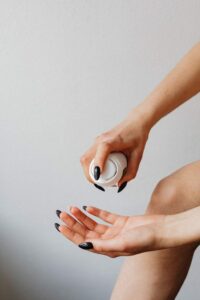
Taking care of skin before, during, and after hair removal can go a long way in preventing razor bumps.
If you've tried to treat pseudofolliculitis barbae yourself but find the situation getting worse, it may be time to check with a doctor.
Are you looking for a doctor near you to treat your sensitive issues? My Virtual Physician has board-certified physicians who can address gynecological and primary care problems via video visits.
If you would like to talk with a board-certified doctor, you can schedule your appointment online now. My Virtual Physician offers health screening, lab tests, and counseling to meet all of your healthcare needs.